Yesterday in the wee hours of the morning (1:38 a.m.), I received an email from Susan Berta of Orca Network entitled: “cannon fire on the hydrophone 955pm sept 2nd?” The text read:
Just found this on our facebook page, passing along fyi, not sure if anyone else heard it?
susan
Ursula Renteria
Yesterday at 9:55 PM
is the military conducting war games near lime kiln ? I hear cannon fire on the hydrophone 955pm sept 2nd
In the past this would have been hard to investigate because we saved disk space by archiving only acoustic statistics and brief sounds that our automated detectors told us were interesting. But thanks to the 2017 Kickstarter and the automated archiving that our new streaming software is doing, I was able to listen into what Ursula heard immediately.
Accessing Orcasound recorded data
First I had to assume that the times specified were local (Pacific = GMT-07:00) and that the sounds would be audible at Orcasound Lab (5km north of Lime Kiln). Therefore I was looking for recordings from around 04:55 GMT on 9/3/2018. Since the Orcasound audio Data is archived in Amazon’s S3 “buckets” using a UNIX time stamp, I converted the local time to UNIX time at https://www.epochconverter.com/ and got 1535950500.
It took a little searching (and a bit of hacking), but I found the right time period in the AWS S3 archive. There were about 55 minutes of recorded segments available, ending at 10:31 p.m. local time. I was able to play the relevant .m3u8 manifest file in an HLS reference player and listen for possible “cannonfire.”
Eventually, it will be easy to download a lossless, uncompressed archived version (FLAC format) of the live HLS stream for further analysis. But at the moment, the Orcasound Lab test node is only streaming the compressed HLS data, so rather than downloading 300 odd 10-second .ts fragments, I listened to the reference player until I heard the suspect “cannonfire” sounds, then routed the player’s audio data into Audacity and recorded the most-interesting 10 minutes at low-resolution (48kbps).
Bangs in the midst of ship noise
Here is the resulting 10-minute recording:
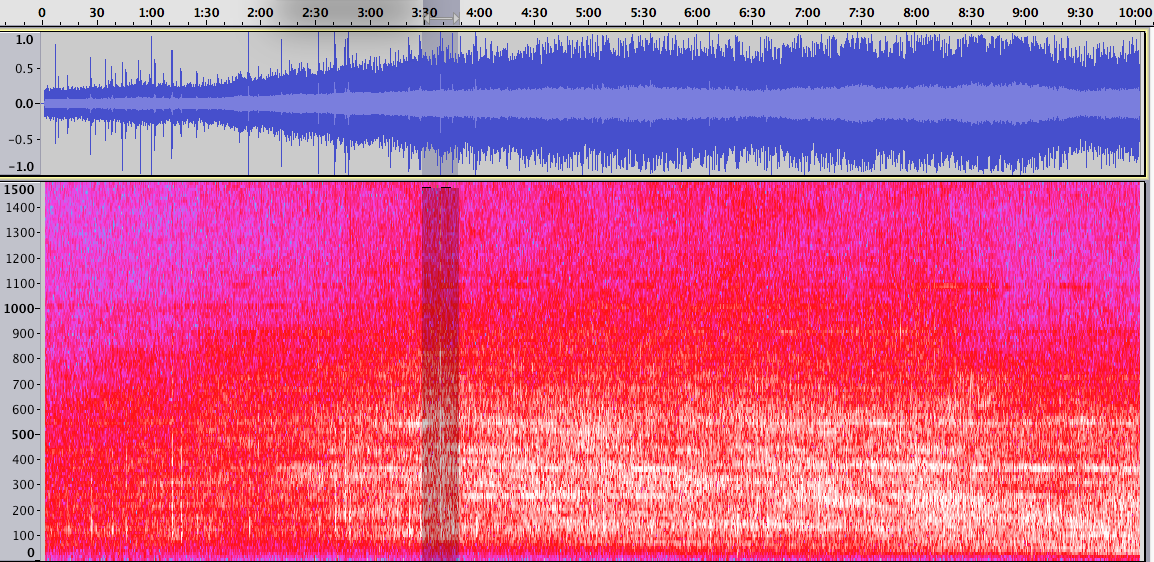
In a nutshell, I definitely hear a series of “bangs” over an increasing background of ship noise. Listening carefully and looking at the 10 minute spectrogram, it sounds (and looks) like a ship passed the Orcasound Lab, with closest point of approach occureing about 6 minutes into the recording (~22:00 PDT). There are about 15 audible bangs in the first few minutes of the recording, spaced intermittently and without any strong temporal pattern. If not random, they seem to come in groups of 3-5 bangs, the period between successive bangs is rarely less than 5 seconds, and the most intense bangs seem to come in closely-spaced pairs. It’s likely that the bangs continue as the ship passes, but are masked by the ship noise.
Each bang is a short ~50-millisecond sound pulse with peak power near 160 Hz. The most intense bangs show harmonics. Each bang is followed by reverberations which are often pronounced (and fun to listen to in Audacity slowed down). Here is an example — as a spectrogram and .ogg and .mp3 clips:
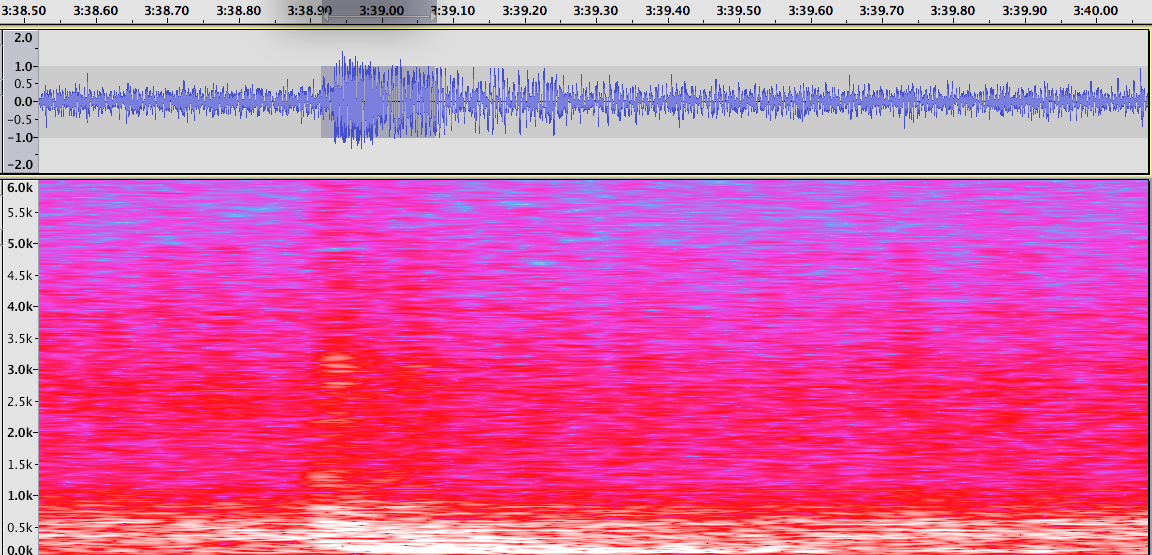
Here are more examples concatenated in a single file (provided in ogg and mp3 formats):
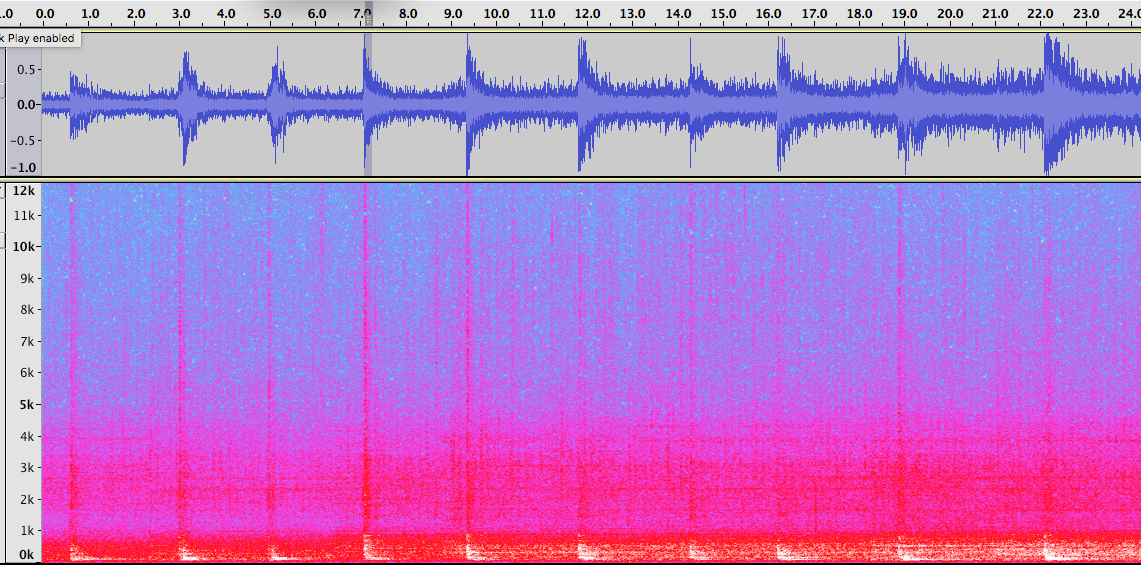
What is doing all this banging?
While these impulsive sounds are reminiscent of underwater explosions, they are really distinct — mostly because of the tonal peaks they contain. Listen to confirmed detonations in the same oceanographic environment (Haro Strait, off the west side of San Juan Island in Washington State, USA) and I think you’ll agree these are not explosions underwater, nor are they the sounds of surface cannons firing (and then propagating into the ocean).
To my ear these bangs sound like a mechanical noise coming from the passing ship. Is a heavy steel plate getting impacted or slammed occasionally? Is a blade of the propeller intermittently cavitating in an especially violent way?
I’ve heard similar sounds on the live audio streams from Orcasound and my memory associates them most with the sounds of the Washington State ferries heard from the Seattle Aquarium. There I assumed that a door or other large steel plate was getting slammed shut or colliding with something.
Archived AIS data from siitech.com suggests that at least three ships were transiting Haro Strait at the time the bangs were heard and recorded. Here are some screen grabs from their historic playback tool that show two cargo ships southbound, followed by a passenger ship — all moving at about 14-15 knots (SOG):
The cargo ship Santa Rosa has it’s closest point of approach (CPA) just after 9:55 p.m., so I think it is the most likely source of the bangs. It’s possible though that the bangs were coming from the first cargo ship (Ever Uberty) which might explain why no bangs are audible after the CPA of the Santa Rosa.
Importantly, there are no logged AIS locations for military ships in the vicinity at the time. I take this as additional evidence that we can answer Ursula’s question with “No — we’re confident that this time — the military is NOT conducting war games near Lime Kiln” — though both the U.S. and Canadian Navy have long records of conducting training/testing within the Salish Sea…
For now, the source of these bangs may remain a mystery. Listening closely with headphones to the 10-minute recording, I can convince myself that the the (3?) blade rate of the first cargo ship is dominating in the first few minutes, but around minute 6 the second cargo ship (with a 4-blade prop) can be heard more clearly. However, neither blade rate seems synchronized with the bangs, so I must conclude that cavitation is not the most likely source.
Do cargo ships have hatch covers or doors that might be slammed around in Haro Strait? Were there big waves that night slamming randomly against the hull? The historical data from the NOAA buoy at Hein Bank (at the south end of Haro Strait) suggests that there were some pretty intense (~25 knot) westerly wind and (~1.5m) wave conditions at the time:
Conclusion: “bang” goes the ocean against your hull!
I’ll conclude that these bang are caused by rogue waves (in a wave field with mean height of ~1.5m) slamming into the side of cargo ships southbound at about 14 knots. The mean speed of cargo ships in Haro Strait is 14.4±2.3 knots, so maybe this is the sound of cargo ship captains heading out into the Pacific as they normally do (ECHO speed limits be damned!), despite a summer storm blowing winds on the beam.
If anyone has an alternative explanation, please leave your ideas or knowledge in the comments!
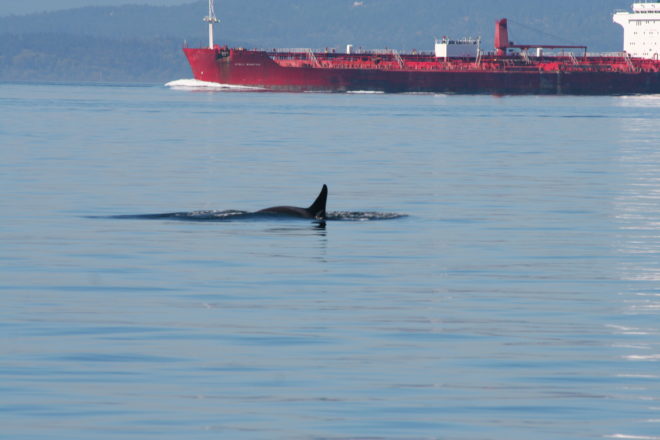
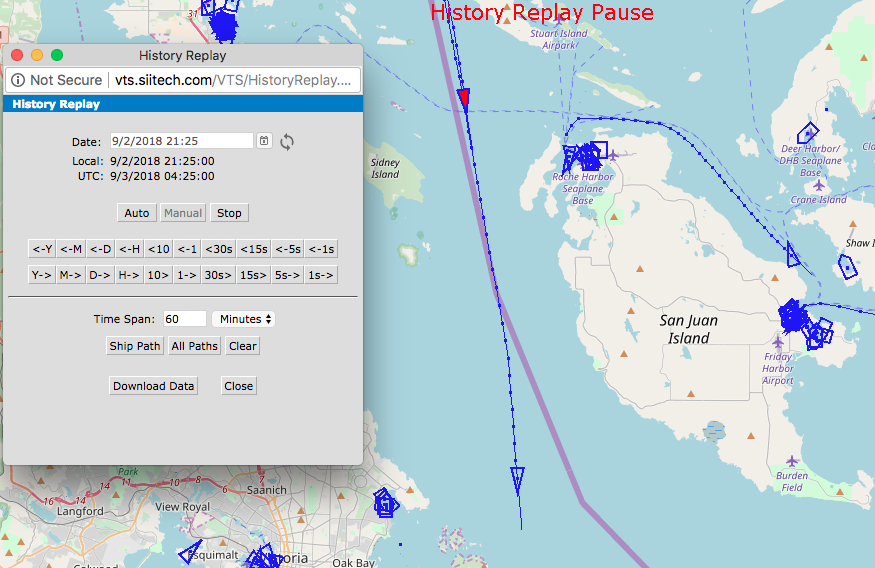
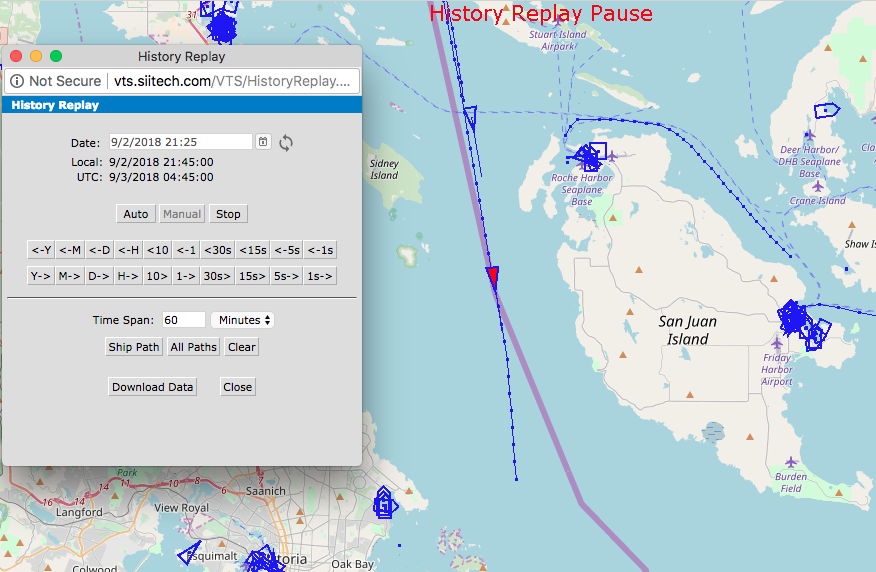
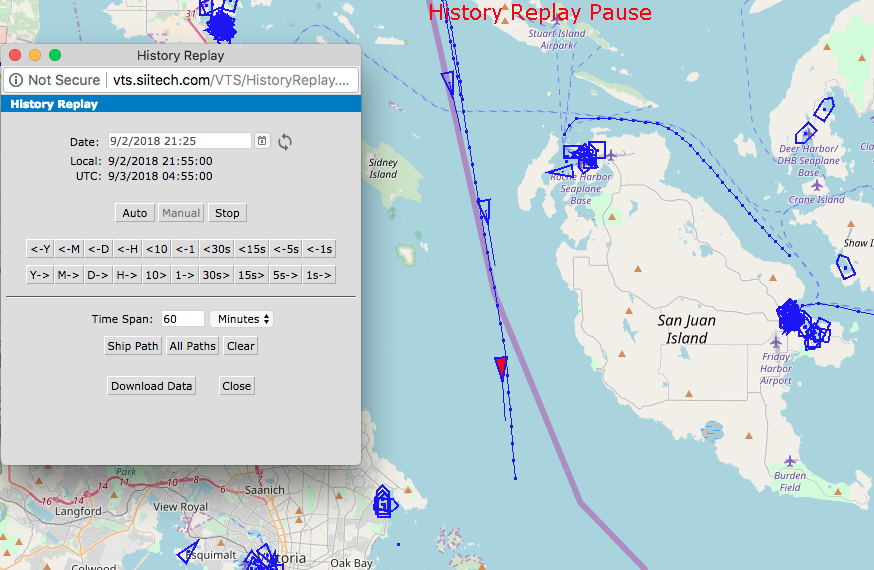


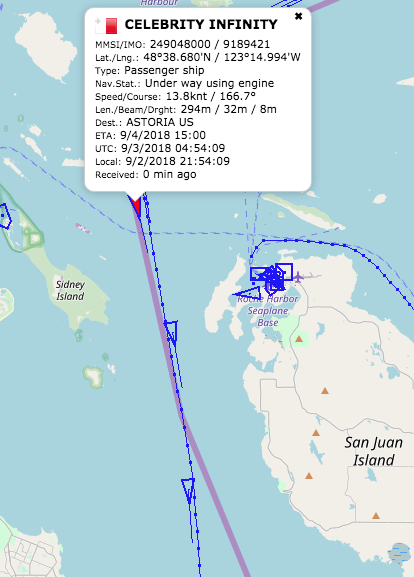
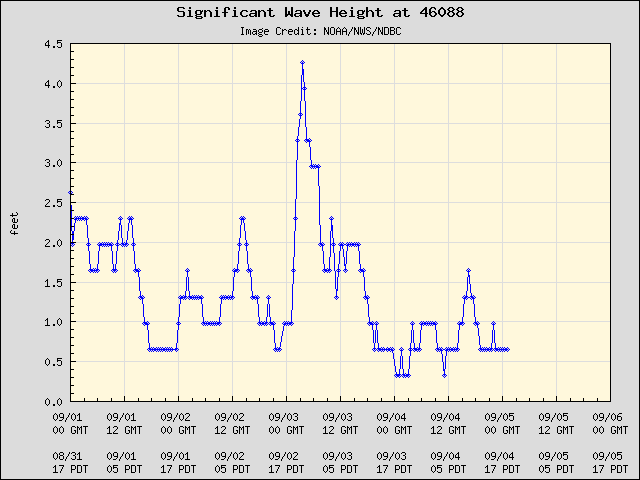
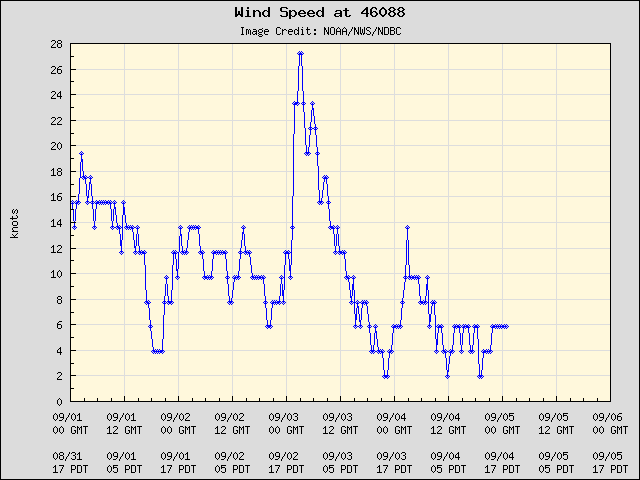
Thank you for this insight and explanation . The information provided and the research involved …. you are amazing !
Thank *you*, Ursula, for listening to the live hydrophones!
I guess I should also ask you, Ursula: “Are the bangs I found and discussed the ‘cannonfire’ you initially reported?”
I love reading and learning more about this topic. I am a biologist myself and I have always been fascinated with marine biology. The ocean is so mysterious and its home to so many amazing species. The sound could come from the waves as you said or it could be some animal banging on the ship hull.
did anyone heard the very loud motor sounds in the Orcasound station approx 18:45 Pacific time, today (9/27/18)?